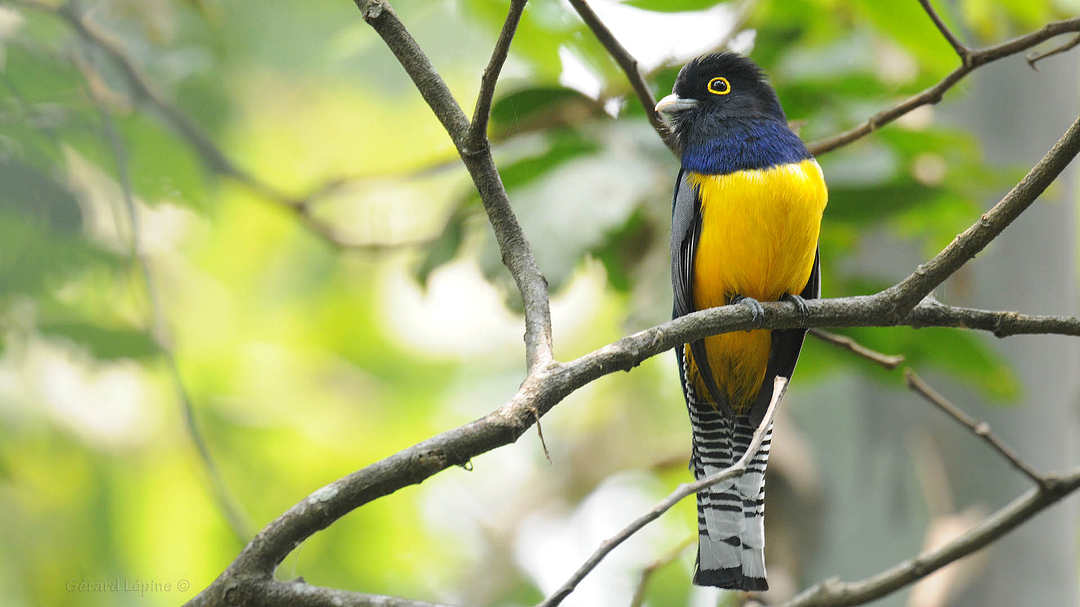
| Tikal archaeology & Tikal Arquitecture |
| Tikal Facts / Tikal & Early Explorers | The Pennsylvania Dig at Tikal / Proyecto National Tikal |
| The Ancient Maya of Tikal | Tikal's Dynastic Rulers | Calendars & The Long Count System | Tikal's Emblem Glyph |
| Acropolis | Lost World | Tikal's Great Plaza | The Twin Pyramid Complexes | Group H / G / F / Bat Palace |
| Temples of Tikal | Tikal's Causeways | Ball-Courts | The Tikal Museums & Visitor Center |
| FAMSI - Tikal's Ceramic Vases & many more Maya Ceramics (External Link) |
Tikal's Grand Plaza
The Great Plaza and its surroundings constituted the core of Tikal. Technically the Great Plaza consists of Temples 1 & 2 and the ball court, which were dramatic additions built around the year 700 A.D. between the Central and the North Acropoli.
In the political sphere, Tikal had gone through a period known as the hiatus toward the end of the seventh century A.D., when no new buildings or inscriptions recorded important events for almost 150 years.

Suddenly Tikal was no longer a "broken city," greatly through a powerful ruler named Ha Sawa Chaan-K'awil (formerly know as Ah Cacaw or Ruler A), who brought Tikal back to its position of wealth and power. He lived a long life (60 to 80 years), leading a series of successful wars against his enemies and seeing Tikal return to its greatness under his reign.To add to the image of Tikal as a renewed and vital city, two new impressive temples were planned and the North Acropolis remodeled.
Unlike most buildings in Tikal, which were built over long periods of time, except for twin-pyramid complexes, which were built to commemorate katun endings, these temples were built in a rather short period of time. Ha Sawa Chaan-K'awil framed the Great Plaza with these two monumental temples, completing Temple 2 during his lifetime and leaving the construction of Temple I, his own burial ground, to be completed by his son. He probably oversaw the carving of the wooden lintels for the doorways and made detailed plans for the decoration and construction anticipating his afterlife.
Temples 1 and 2 are both majestic prototypes of local architecture and represented the type of monumental grandeur accomplished by the rulers of Tikal during the Late Classic Period. The Great Plaza became the focus of sociopolitical life at Tikal during this time. Temple 2, standing 38 meters tall (122 feet), was erected facing East toward the rising sun. Temple 1, a stylized building facing west, toward the setting sun, stands 45 meters high 144.36 feet.

The Maya of Tikal considered Temple I the portal to the Underworld. Ha Sawa Chaan K’awil’s rich tomb was discovered in the interior of the building (Burial 116). Yikin, his son, sealed the tomb after his father's death, before construction began on the temple. Being buried in this spot was a huge break with tradition. Before this time, for more than 500 years, all the rulers of Tikal were buried in the North Acropolis. His royal tomb included several kilos of jade, shells and pottery. Ha Sawa Chaan K'awil was almost 6 ft. tall and his body was left under Temple I after his death with a richly adorned burial, which was excavated by archaeologist Aubrey Trik in 1962. The temple complex may represent the Full Cycle of Life itself!


Coe's guide to Tikal is popular as it is concise and includes a map. Other books offer more information on Maya history, see our recommendations on the book and article section in tikalpark.com or search the web for more resources. If you decide to take a guide, make sure he or she is qualified in the subject matter you are most interested in. Take plenty of water, mosquito repellent and a good pair of hiking boots. Discover Tikal and enjoy the largest ceremonial center in the Maya World. Don't forget to visit the museums. The Morley Museum is a small building, close to the parking area where some of Tikal's most valuable ceramics and objects are kept. In the Visitor's Center there is another museum, which houses the Stelae of Tikal. It is a good idea to stay overnight or even for a few days to fully enjoy Tikal. There are three hotels and a camping ground in the park, as well as a number of restaurants and small coffee shops, which provide some comfort for visitors. Should you be lucky enough to visit Tikal on a full moon, do not hesitate and ask for a special permit to visit the park after hours at the Administrator's office beyond the Morley museum. You'll find the administration helpful; they will issue a permit immediately by stamping the reverse of your ticket, which should be purchased daily at the park’s entrance or the booth close to the trail.
We hope you will enjoy www.tikalpark.com and its Spanish version www.parque-tikal.com
For reservations or more information write to us at tikalpark@tikalpark.com.


Listen to the sounds of the jungle in the Tikal National Park. (Audio: morning concert in Tikal's Grand Plaza).
| Home | Arts | Sciences | Transportation | Lodging | Special Tours | Birding Tours | Tours | Map | About Us | e-mail us | Site Map |